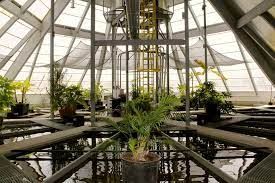The Regenitech Powerhouse makes Biochar, Algae, and Energy from waste biomass. It works, but can it scale?
I recently watched The Need to Grow, a powerful documentary on sustainability and the importance of healthy soil for our planet. It’s a must-watch and covers many hard-hitting points, particularly that we have an estimated 60 years of farmable soil left on the planet! It explains some of the reasons for this, the key being that the agricultural industry is in disarray. Farms and large industrial agricultural companies are pumping soil with chemicals to try and accelerate plant growth. As a result, the topsoil is dying, and our food is getting unhealthier.
All the while, C02 emissions continue to grow – agriculture is the fourth-largest emitter of greenhouse gasses, churning out 5.78 billion tons a year. Many aspects of the documentary caught my eye, but one thing stood out. It talked about a company called Regenitech, founded by a genius named Michael Smith. He showed off his “Green Power House,” which claimed to speed up the plant growth cycle and do what nature would take 400 years in a few days.
It’s a staggering claim that encouraged me to dig a little deeper. Will every farm want one if it is as good as it sounds? Can Regenitech help save our planet by improving agricultural sustainability?
Regenitech Utilizes Very Cool, Innovative Technology
First, “Green Power House” is a fantastic name for any project. Michael Smith has effectively created a supercharged closed-loop greenhouse, burning waste with gasification and using waste gas to grow algae and run a generator with a biochar byproduct that is a superfood for soil.
The technology involved is incredible and can help to regreen the planet. More plants and trees mean more oxygen in the air and more things able to take carbon dioxide from it. You can see why this is exciting and how it can pave the way for a sustainable agricultural future.
But Can It Scale?
If more people watched the documentary, it could be a better-known idea. However, the main reason Regenitech isn’t already on every farm is likely to do with our old friend money. Like many earth-friendly ventures, the finances probably don’t work well if you only count the money. But what if there is more to count and money is not the limiting factor? If you measure the benefits to the environment, which we depend on for our existence, is it worth spending the resources to build?
How many powerhouses could be built if money were not a limiting factor, say, from a decentralized money system like DDFM? Where money is earned into existence, and the natural limiting factors are labor and materials.
In an ideal world, there’s no denying the good Regenitech could do. It would significantly impact the US alone, leading to healthier produce free from dangerous chemicals. In developing countries, the impact would be even better. It can make farming more accessible and faster, helping these countries grow more food to sustain themselves. In turn, this sets the building blocks for a growing economy.
Overall, there’s a lot to like about Regenitech and its founder. It’s intrigued me, and I’d love to learn more about it and see how it develops in the future. As a society, we must do whatever it takes to control carbon emissions. This starts by finding better solutions and then finding ways to implement them. Regenitech’s Green Power House could hold the key to kickstarting a revolution in agriculture.
